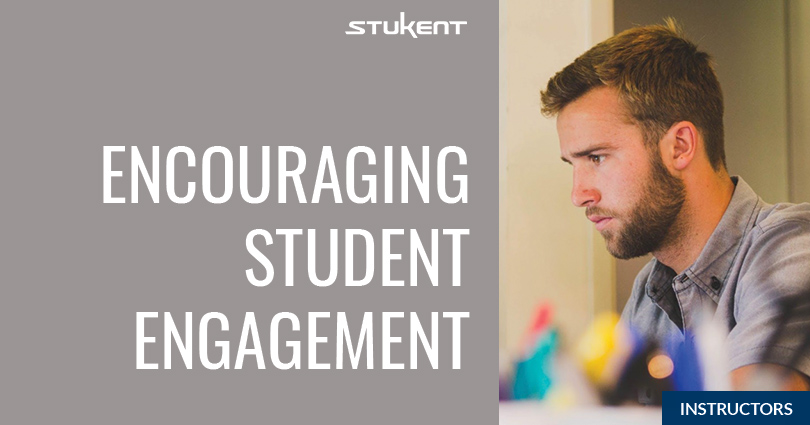The next generation of college students is comprised of young adults who live internet-connected lives. They’ve grown up with advanced technologies in the palms of their hands. They may not know what MySpace is, but many of them spend hours per day browsing their Facebook feeds.
These young adults are main contributors of the text, photos, audio files, and videos that are the building blocks of the World Wide Web, which gives everybody the ability to share content and experience the content of others.
Since content is key in 2018, and the academic prospects and enrollees of tomorrow know their way around internet content, it follows that leveraging the content of a student body would be a great way to set a school apart and to encourage more student engagement.
But what opportunities are there for universities to make use of students’ content? How can incorporating user-generated content cultivate more student engagement? And what’s the benefit of a more engaged student body?
Student Engagement
More engagement means a higher quality of campus life and a better, more memorable college experience for students. When they have a great university experience, they’re much more likely to recommend their alma mater to family, friends, and children.
But most importantly, when a student body is engaged and participative, the school is more attractive to prospective students. Granted, not every enrollee wants to be involved in school-related activities and extracurriculars, but many applicants will at least want the options. When your prospects can see strong engagement among the student body, it makes the prospect of being part of that student body more attractive. It could even be what gives your university a leg-up over competitors who have less engaged students.
Make submission super easy
Before you can boost engagement using student content, you’ve got to collect some student content to work with. That means students need ways to make content available to the school. Although sifting through the social media profiles of an entire student body would give the most options, it’s not the most time-effective process, not to mention the moral implications of doing that anyway. So, the best route is to give the students one or more channels through which to submit their content.
One possibility would be to set up a page on a university’s website where students can submit photos or other content. This could be as simple as a submission form that collects basic student information (e.g. name, academic department, graduation year) and allows students to upload files.
But an even more convenient way to receive user-generated content from students is to have them “submit” content by using special hashtags on social media. Numerous colleges and universities have gone this route, including Northeastern University (#TrueNortheastern) and Adelphi University (#AdelphiUniversity).
If a school goes the hashtag route, it should make sure to publicize the hashtag every chance it gets. Put the hashtag in flyers and on the official school website. Include it in posts on social media. A school might even consider adding it to official merchandise, including T-shirts and sweaters. Remember to inform students that the use of the hashtag gives the school consent to use student content in promotional material.
Commemorate and celebrate events
In addition to having consistent channels for submission, universities can increase content sharing by leveraging special events, celebrations and other functions that your students are likely to care about. Granted, not every student participates in school-related events and festivities, but depending on the size of your student body, even a fraction of the student body can be a large number.
When students post photos, videos, and other content to social media that highlight a celebration or special event, consider featuring some of this media by re-sharing it on social media or even posting it on the school website. You can even utilize social media management tools to help you facilitate the promotion of this content.
This has a couple of benefits: First, it shows that a school’s students are invested in the campus culture, which is going to be attractive to many prospects and applicants. Second, promoting and resharing student content gives the college or university the chance to recognize and highlight students who participate at and are engaged with the school. In short, this recognition shows that student participation and engagement is valued.
Student content is a living story
Student content is a great resource for telling a dynamic story of a school. Storytelling is powerful, and media from actual students offers a rich narrative and a more accurate portrayal of the school than other resources may.
And here’s one of the greatest benefits to using student content: When prospective students are exposed to the narrative crafted through student content, it’s much easier for prospects to picture themselves in students’ shoes. There’s nothing quite as personal as a group selfie taken at the library during a study session or from the student section of the football stadium on game night. Just by looking at your students’ content, someone who’s considering applying to or attending a university can easily picture what it’s like to be part of that university’s culture. It lends a level of authenticity you won’t get from staged photos.
You can use student media in many other places, too, including promotional materials (e.g. pamphlets, catalogs) and banner images for the school’s social media profiles.
Overall, student content inspires more engagement among existing students while serving as an incentive for prospective students to apply to your university, driving both student engagement as well as enrollment.






